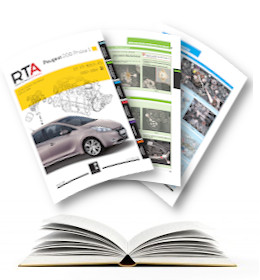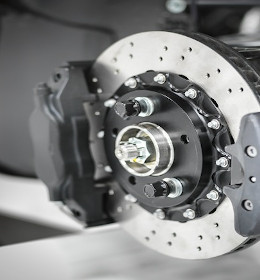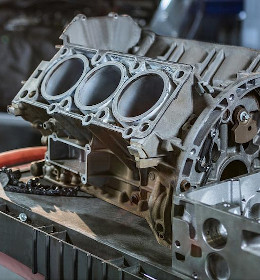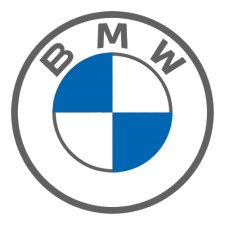Que signifie votre code Code Défaut PEUGEOT ?
Grace au système OBD, les
Peugeot
fabriqués après 1996 sont normalement équipés d'une prise diagnostique OBD.
Si l'ordinateur de la voiture rencontre un problème,un code d'erreur ou un code de diagnostic (DTC)
sera stocké dans la mémoire de l'ECU de la voiture.
Avec un lecteur OBD branché sur le port OBD (On-Board Diagnostics) de la voiture, vous pouvez lire la liste des codes stockés, et donc découvrir quel est le problème.
Les codes suivent une formule permettant de savoir généralement quel est le problème avant même de regarder le tableau ci-dessous.
Nous vous présentons ci-dessus une liste très complète des différents codes défauts possibles.
Si le code défaut de votre auto s'affiche au tableau de bord, vous n'aurez peut-être même pas besoin d'un lecteur OBD . il sera dans la liste .
Réparer le code défaut de votre auto, c'est potentiellement simple à faire avec vos revues et méthodes techniques.

Réparer le code défaut de votre auto, c’est potentiellement simple à faire avec nos revues et méthodes techniques
| Code | Libellé |
|---|---|
| P1A84 | Reversible alternator : Current sensor fault |
| P1A85 | Reversible alternator : Rotor speed sensor fault |
| P1A86 | Reversible alternator : Temperature sensor fault |
| P1A87 | Reversible alternator : Voltage sensor fault |
| P1A88 | Reversible alternator : Prohibited value of the limitation of the energising current or of the voltage or of the temperature or of the operating status of the alternator |
| P1A8D | Reversible alternator restarting authorisation line : Short circuit to earth or open circuit |
| P1A8E | Reversible alternator restarting authorisation line : Short circuit to positive |
| P1A8E | Starter control interface unit : Short circuit to positive on the restarting inhibiting line |
| P1A8F | Reversible alternator restarting authorisation line : Fault of coherence between the wire link and the LIN link |
| P1A90 | Reversible alternator : Overheating of the reversible alternator or its surroundings |
| P1A91 | Reversible alternator : Failure to restart the engine |
| P1A93 | Reversible alternator : Power electronics fault - Motor mode out-of-action |
| P1A94 | Reversible alternator : Power electronics fault - Alternator mode downgraded |
| P1A98 | Stop and Start : Starting fault - Electrical network |
| P1A99 | Stop and Start : Electrical network voltage too high |
| P1A9A | Stop and Start : Overvoltage of the electrical network |
| P1A9B | Reversible alternator : Voltage regulation fault |
| P1A9C | Capacitor malfunction |
| P1A9D | Voltage retaining device : Internal fault |
| P1A9E | Voltage retaining device : Open circuit or short circuit to earth of the power storage battery charging line |
| P1A9F | Voltage retaining device : Open circuit or short circuit to earth of the supply line or of the earth between the voltage retaining device and the power storage battery |
| P1AA0 | Voltage retaining device : Open circuit or short circuit to earth of the voltage measurement |
| P1AA1 | Voltage retaining device : Supply open circuit or short circuit to earth |
| P1AA2 | Voltage retaining device : Internal electronics fault |
| P1AA3 | Voltage retaining device : Internal fault |
| P1AB3 | Reduction motor : Reduction gear control short circuit open circuit |
| P1AB9 | Reduction motor : Unwanted coupling |
| P1ABA | Reduction gear position sensor : Current value too high |
| P1ABB | Reduction gear position sensor : Current value too low |
| P1ABC | Reduction gear position sensor : Short circuit to positive or open circuit |
| P1ABD | Reduction gear position sensor : Short circuit to earth |
| P1ABF | Reduction motor : Absence of coupling |
| P1AC0 | Reduction motor : Absence of uncoupling |
| P1AC1 | Reduction gear position sensor : Difference from the reference value too great |
| P1AC2 | Reduction gear position sensor : Fault of coherence between the sensor and the synchronisation of the speeds |
| P1AC3 | Drive train : Activation of the power train too long |
| P1AC4 | Drive train : Failure of the activation of the electromotor sub-assembly |
| P1AC5 | Drive train : Deactivation of the power train too long |
| P1AC6 | Drive train : Failure of deactivation of the electromotor sub-assembly |
| P1AC7 | Position sensor of the reversible alternator 1 : Short circuit to earth |
| P1AC8 | Position sensor of the reversible alternator 2 : Short circuit to earth |
| P1AC9 | Position sensor of the reversible alternator 3 : Short circuit to earth |
| P1ACD | Drive train cooling circuit coolant pump status return : Open circuit or short circuit to positive |
| P1ACE | Drive train cooling circuit coolant pump status return : Short circuit to earth |
| P1ACF | Electric traction machine : Voltage of the control current too high |
| P1AD3 | Drive train : Lack of coherence of the speed between the electric drive machine and the internal combustion engine |
| P1AD5 | Reversible alternator position sensor : Short circuit to positive |
| P1AD6 | Reversible alternator position sensor : Short circuit to positive |
| P1AD7 | Reversible alternator position sensor : Short circuit to positive |
| P1ADA | Waterpump of the drive train cooling circuit : Voltage too low |
| P1ADB | Waterpump of the drive train cooling circuit : Voltage too high |
| P1ADC | Reversible alternator position sensor : Plausibility fault |
| P1AF3 | Voltage sensors of the traction battery : Communication error |
| P1AF4 | Voltage sensors of the traction battery : Traction battery voltage too high on the positive terminal before the switches |
| P1AF5 | Voltage sensors of the traction battery : Traction battery voltage too low on the positive terminal before the switches |
| P1AF6 | Voltage sensors of the traction battery : Plausibility error on the positive terminal before the switches |
| P1AF7 | Voltage sensors of the traction battery : Traction battery voltage too high on the negative terminal before the switches |
| P1AF8 | Voltage sensors of the traction battery : Traction battery voltage too low on the negative terminal before the switches |
| P1AF9 | Voltage sensors of the traction battery : Plausibility error on the negative terminal before the switches |
| P1AFC | Voltage sensors of the traction battery : Voltage too high |
| P1AFD | Voltage sensors of the traction battery : Voltage too high |
| P1AFE | Voltage sensors of the traction battery : Voltage too low |
| P1AFF | Voltage sensors of the traction battery : Voltage too low |
| P1B00 | Voltage sensors of the traction battery : Plausibility fault |
| P1B01 | Voltage sensors of the traction battery : Open circuit |
| P1B02 | Voltage sensors of the traction battery : Voltage too high |
| P1B03 | Voltage sensors of the traction battery : Voltage too low |
| P1B04 | Voltage sensors of the traction battery : Plausibility fault |
| P1B11 | Drive train : Detection of an impossibility of using the traction battery |
| P1B12 | Voltage sensors of the traction battery : Open circuit |
| P1B1D | Electric traction machine : Operation in free wheel impossible |
| P1B1E | Electric traction machine : Impossible to put into short-circuit |
| P1B1F | Direct voltage (DC/DC) transformer : Internal fault |
| P1B21 | Direct voltage (DC/DC) transformer : Internal fault |
| P1B22 | Direct voltage (DC/DC) transformer : Internal fault |
| P1B23 | Waterpump of the drive train cooling circuit : Stopping of the engine due to a fault |
| P1B24 | Waterpump of the drive train cooling circuit : Stopping due to the voltage being too high or too low |
| P1B25 | Waterpump of the drive train cooling circuit : Invalid value |
| P1B26 | Waterpump of the drive train cooling circuit : Warning |
| P1B65 | Electric traction machine : Programming incoherent |
| P1B66 | Reversible alternator : Programming not carried out |
| P1B67 | Electric traction machine : Excessive speed |
| P1B68 | Electric traction machine : Activation or deactivation problem |
| P1B6A | Gearbox : Not characterised |
| P1B71 | Network voltage maintaining device triggering line fault : Short circuit to earth or open circuit |
| P1B72 | Network voltage maintaining device power earth fault : Open circuit |
| P1B73 | Network voltage maintaining device internal fault |
| P1B75 | Network voltage maintaining device internal fault |
| P1B77 | Network voltage maintaining device internal fault |
| P1F22 | Immobiliser ECU : Incorrect code |
| P1F23 | Immobiliser ECU : Communication problem |
| P1FA1 | CAN network : Fault absence of communication with the airbag ECU |
DEFINISSEZ VOTRE MARQUE POUR ACCEDER A VOS CODES DEFAUTS
-
Revue technique RTA

Revue Technique Automobile
La revue technique de référence depuis 1946. La RTA est une revue papier pour tous publics, qui vous permet d'effectuer les petites et les grosses réparations
 Voir le descriptif
Voir le descriptif
-
Entretien courant MTA

Méthode Technique Automobile
La MTA est issue de nos outils destinés aux pros de l'auto. Ces méthodes en ligne permettent d'effectuer les opérations de maintenances de votre auto (filtres, courroies, etc.)
 Voir le descriptif
Voir le descriptif
-
Toutes réparations MTAx

Méthode Technique Automobile Expert
La MTA expert est un outil en ligne destiné aux experts en mécanique et en carrosserie, pour effectuer tous types de réparations sur une voiture.
 Voir le descriptif
Voir le descriptif















